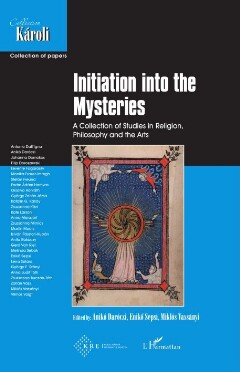Page 318 [318]
ENIKŐ SEPSI
CONCLUSION
In his work Performance Theory, Schechner highlights that the attention paid
to the manner of theater-making is already an experiment in the ritualization
of performance. In a period when authenticity is difficult to define, “when
public life has been theatricalized,” Schechner elaborates, “the performer was
asked to doff his or her traditional masks—to be not an agent of ‘playing’
or ‘fooling’ or ‘lying’ (public masquerades) but one who ‘tells the truth’.
If not this, then at least she or he should show how the masks are put on and
taken off—perhaps in that way educating the public about the theatricalized
deceptions practised on them by political leaders and media dons. Instead of
mirroring the age, performers were asked to remedy it. The professions taken
as models (and frequently enough cited by Grotowski and others) included the
priesthood and medicine.”** Questioning, constructing and deconstructing
anthropoglyphs, Novarina’s theatre also aims at the resultative aspect of
rites. In fact, it also has a liturgical purpose in the above sense of remedy.
There is a certain anamorphism in understanding kenotic ritual.*? In other
words, the spectator must have the correct angle, i.e. he/she must be involved
in order to see a comprehensible form or figure. Compared to the scripted
(written) rituality, there is a “liminoid” state of receptivity of the live theatre
performance, i.e. the performed.
There is a recurrent cognitive metaphor in Novarina’s work: Christ is the
Word/Logos, and the stage is the place where words are eaten. It is the place
of the Last Supper. But the Last Supper is not simply a metaphor or historical
allusion, but a figure of speech which has two parts: the type and the antitype
linked with the “radical openness towards the future." According to
Northrop Frye, compared to the metaphor, typology is not a simultaneous
figure of speech. Rather, it is a figure which moves in time: even antitypes
have a progress that is an intensification where newer and newer perspectives
are opened up until they reveal the apocalypse. This movement describes
Novarina’s circular or rather spiral-like dramaturgy well (he also uses
names like ANTI-Personne, spiral-woman, etc.). For Novarina, the theatre
is the place for the renewed form of the Last Supper, the communion of the
actors. In typology and in Novarina’s dramaturgy, there is both a horizontal
movement forward and also a vertical leap.
°8 Richard Schechner, Theater for Tourists in idem, Performance Theory. Taylor & Francis
e-Library, 2004, 136-137.
See the same statement about rituals in general and especially poetic rituals: Eniké Sepsi,
On Bearing Witness to a Poetic Ritual: Robert Wilson’s Deafman Glance as seen by Janos
Pilinszky, in Jay Malarcher (ed.), Text & Presentation, 2017, McFarland, 2018, 177.
Tibor Fabiny, Figura and Fulfilment. Typology in the Bible, Art, and Literature, Eugene
[Oregon], Wipf and Stock, 2016, 153.
29
30
+ 316 +
Daréczi-Sepsi-Vassänyi_Initiation_155x240.indb 316 ® 2020. 06. 15. 11:04:26

